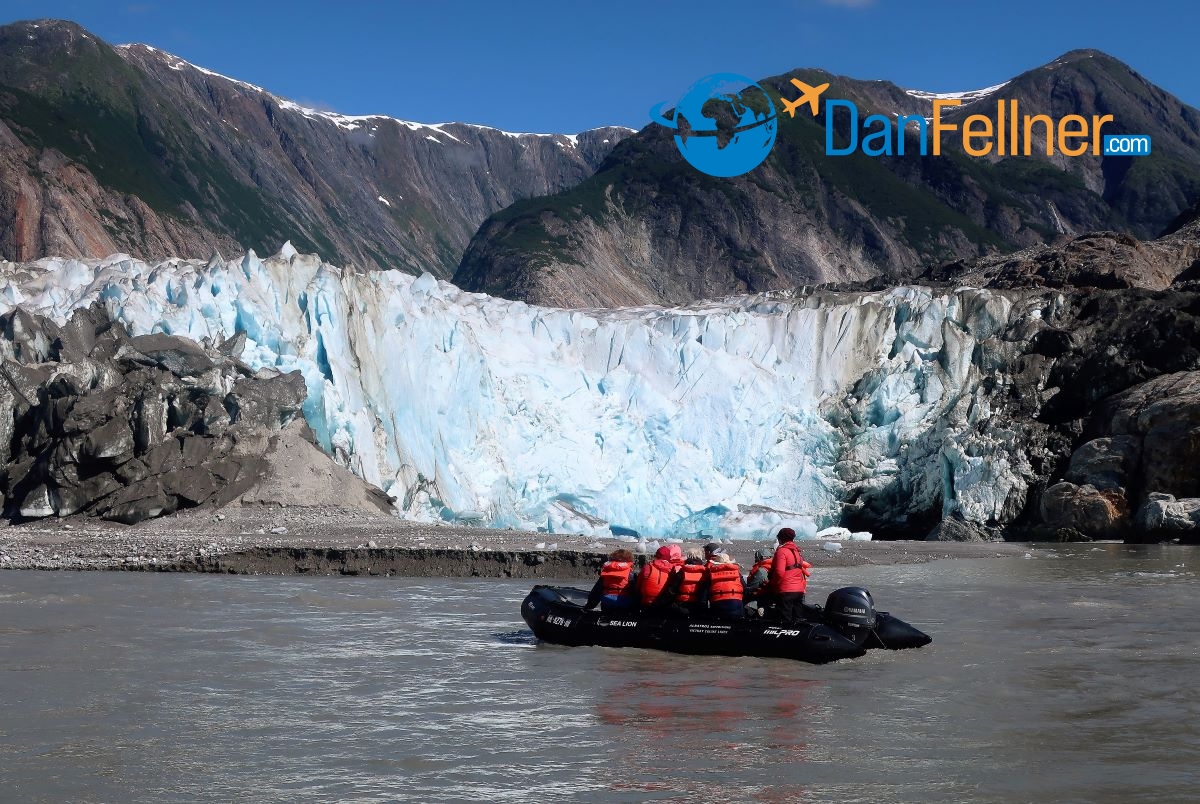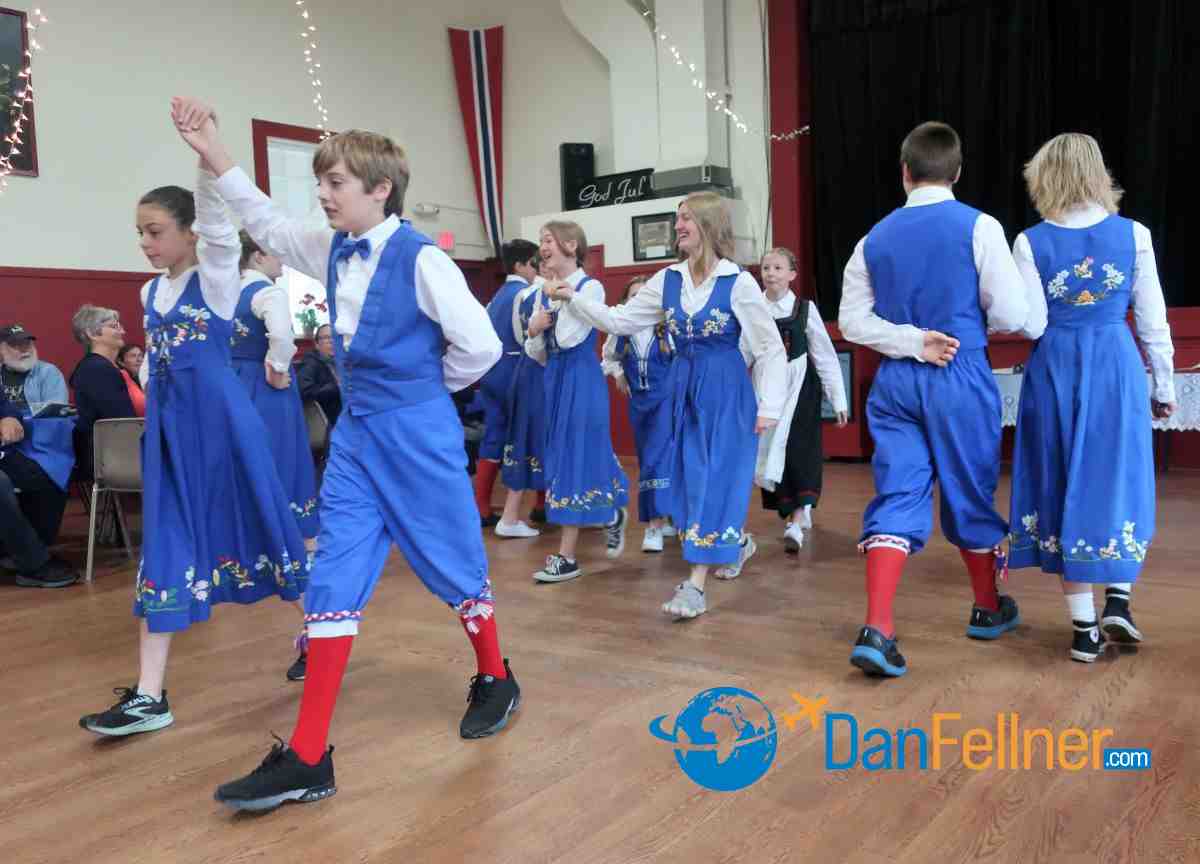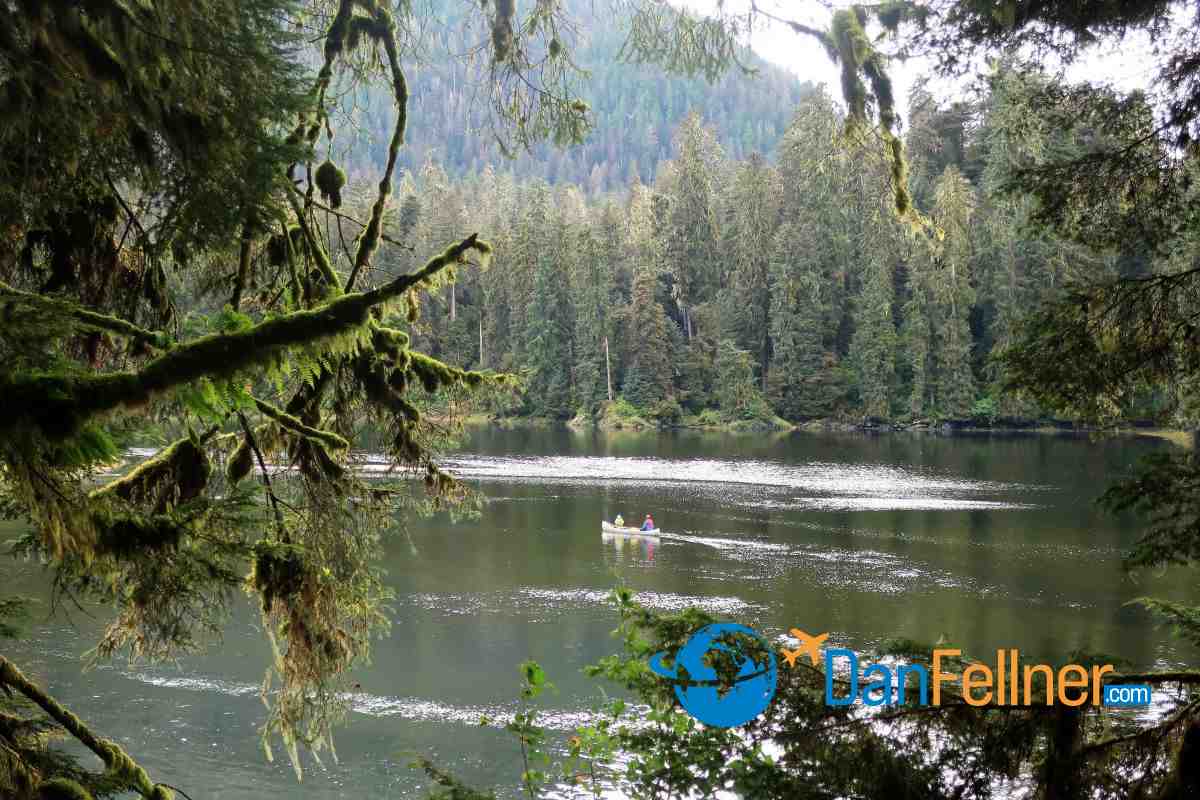Bears, glaciers, Tlingit culture, highlights of small-ship cruise through Inside Passage
The Arizona Republic/USA Today.com — September 4, 2022
KUIU ISLAND, Alaska – Move over, Captain Kirk.

Passengers on one of the Ocean Victory’s Zodiacs get an up-close view of the North Sawyer Glacier in the Tracy Arm Fjord in Alaska.
In a remote bay in southeast Alaska’s Alexander Archipelago, expedition leader Mark Cassio was briefing our group of adventure travelers in the lecture hall on the Ocean Victory about the following day’s itinerary.
“You will boldly be going where no one has gone before,” he told us, only half-joking about our stop at Kuiu Island, part of the massive Tongass National Forest. “This is a place that cruise ships – even expedition ships – rarely get to see. You truly are 21st-century explorers.”
The next day, we had the entire bay to ourselves to explore the area’s abundant wildlife on the Ocean Victory’s kayaks and Zodiacs – 10-passenger motorized inflatable boats.

The Ocean Victory, a 185-passenger expedition ship operated by American Queen Voyages, in the Tracy Arm Fjord in southeast Alaska.
With the help of the ship’s naturalists, we spotted sea otters, bald eagles and jumping chum salmon. We even got within 30 yards of a humpback whale – close enough to hear the animal expel air through its blowhole.
Expedition cruising in Alaska can offer travelers a far different – and more enriching – experience than the mega-ships that overrun ports like Skagway, Juneau and Ketchikan with passenger counts that sometimes exceed the entire local population.

The LeConte Glacier, near Petersburg, Alaska, is the southernmost tidewater glacier in the Northern Hemisphere.
On our 11-day journey from Sitka to Vancouver that zig-zagged about 1,500 miles through the Inside Passages in Alaska and British Columbia, we rarely encountered any other ships. The small towns we visited along the way – Kake, Petersburg and Wrangell – seemed far more authentic than the congested ports-of-call on most Alaskan cruise itineraries.
“We have the luxury of having a narrower vessel, a much shallower draft, and that allows us to sneak into some of these places and then put our toys in the water – like our Zodiacs – to get everyone even closer to something like a tidewater glacier,” said Cassio.
Indeed, we got within 200 yards of three different turquoise-colored glaciers, often hearing a thunder-like crackle when a piece of ice would break off – known as calving – creating waves that would gently rock our Zodiacs.

Passengers on the Ocean Victory kayak through the aptly named Misty Fjords at the Tongass National Forest in southeast Alaska.
The year-old, 185-passenger Ocean Victory is operated by American Queen Voyages, best known for its fleet of red paddlewheel-propelled boats that cruise the Mississippi, Ohio and Columbia rivers.
The Ocean Victory cruises in Alaska under the American Queen brand from May through September before heading south to cruise in Antarctica for a company called Albatros Expeditions.
Our sailing was about 60 percent full – 114 passengers and 106 crew members, including a 15-person expedition team of marine biologists, ornithologists and botanists.
When they weren’t presenting lectures and leading “hands-on science” demonstrations in the ship’s onboard laboratory, the expedition team took us on Zodiac and kayak trips through secluded bays and some of the most scenic fjords in North America, including Tracy Arm, Endicott Arm and Misty Fjords.

Patricia Adkisson, a retired educator and member of the Tlingit community, lectures about Alaska’s indigenous peoples onboard the Ocean Victory.
Southeast Alaska has been inhabited by the indigenous Tlingit (pronounced Klink-it) peoples for thousands of years. Our port visits offered an opportunity to learn about the Tlingits’ history and traditions.
Twice during the voyage, members of local Tlingit communities came onboard to present lectures about their culture and teach us a few words of the Tlingit language.
Here are the leading sites to see at or near three off-the-beaten-path Alaskan towns at which we stopped on our expedition cruise through the Inside Passage.
Kake’s Tlingit culture
Few cruise ships stop in this town of just 550 residents at the tip of Kupreanof Island in Frederick Sound. Pronounced “cake,” the word means “dawn” in the Tlingit language.

Falen Mills sings a traditional Tlingit song at the base of the world’s tallest single-tree totem pole in Kake, Alaska.
Kake makes claim to having the world’s largest totem pole carved from a single tree – a Sitka spruce. Our guide told us there are other places that profess having taller totem poles, but those were made by stacking two or more trees on top of each other, which is “just plain cheating.”
We walked up a small hill to see the 132-foot-tall structure, which was erected in 1971. It took five carvers more than a year to complete it.
Our group gathered at the base of the pole and listened to Falen Mills, a member of Kake’s Tlingit community, sing traditional songs and explain the cultural importance of totem poles to the Tlingit people. We also witnessed a wood-carving demonstration by a Tlingit elder in the town’s school gymnasium.
Petersburg’s Norwegian heritage
Compared to Kake, Petersburg is a metropolis with about 3,100 residents. The endless supply of ice from nearby LeConte Glacier led Peter Buschmann, a Norwegian fisherman for whom the town is named, to settle here in the late 19th century. So many of his countrymen followed him that the town has been dubbed “Alaska’s Little Norway.”

The Sons of Norway Hall in Petersburg is listed in the National Register of Historic Places.
We got a taste of Petersburg’s Norwegian culture at the Sons of Norway Hall, just a short walk from where the Zodiacs dropped us off in the harbor. The hall was built in 1912 and is listed in the National Register of Historic Places.
Inside, we sampled traditional Norwegian pastries and watched a troupe of schoolchildren – called the Leikkaring Dancers – perform traditional Norwegian dances.

The Leikkaring Dancers perform at the Sons of Norway Hall in Petersburg, Alaska. Petersburg is known as “Alaska’s Little Norway.”
Petersburg is a gateway to the LeConte Glacier, the northern hemisphere’s southernmost tidewater glacier. I took a one-hour jetboat ride from Petersburg to see the glacier’s magnificent turquoise-colored ice cliffs.
Wrangell: Indigenous culture and feasting bears
The town of Wrangell, with a population of about 2,100, is on Wrangell Island in the heart of the Tongass National Forest. At 16.7 million acres, the forest is roughly the same size as West Virginia.
Like Kake, Wrangell offers an interesting glimpse into Tlingit culture. We visited Chief Shakes Tribal House, named after a line of like-named Tlingit clan leaders.

Virginia Oliver, an elder with the Tlingit Nation, discusses Tlingit culture at Chief Shake’s Tribal House in Wrangell, Alaska.
At the Petroglyph Beach State Historic Park a mile outside of town, we saw dozens of ancient petroglyphs carved into metamorphic rocks, depicting whales, salmon and other figures important to the Tlingit people.
About 30 miles southeast of Wrangell – a one-hour jetboat ride – is the famed Anan Wildlife Observatory. There are few places on Earth where you can get so close – within a few yards on a covered viewing platform – to safely watch brown and black bears hunt for salmon.
During my mid-August visit, the Anan Creek was full of pink salmon, which made a hearty feast for the several bears hunting that day, needing to fuel up for their upcoming winter hibernation. (see video shot by the author: Black bear catches a salmon at Anan Creek).

A black bear plucks a pink salmon out of Anan Creek about 30 miles southeast of Wrangell, Alaska.
The U.S. Forest Service only allows 60 visitors a day during the peak summer months. The Ocean Victory received an allotment of 20 permits on the day of our Wrangell port stop.
Fortunately, I had booked the excursion several weeks in advance of the sailing; otherwise, I likely would have missed out on what proved to be my most memorable adventure of the trip.
Rejoining the crowds in Ketchikan
It wasn’t until we got to Ketchikan, a port stop on almost every Inside Passage cruise, that we encountered throngs of tourists. There were so many cruise ships docked that the Ocean Victory had to park at Ward Cove, 7 miles north of downtown Ketchikan.

The 16.7-million-acre Tongass National Forest in southeast Alaska is about the same size as West Virginia.
After more than a week of relative solitude, I had no desire to take a shuttle bus into town to rub elbows with thousands of passengers crowding the boardwalk on Creek Street, taking selfies and hunting for souvenirs.
I was perfectly content spending a quiet day on the ship, reading a book and watching the spruce and cedar trees in Tongass National Forest change to varying shades of green as the sun peeked in and out of the clouds.
Websites for more info:
Alaska Visitor Information Centers
American Queen Voyages

© 2022 Dan Fellner



